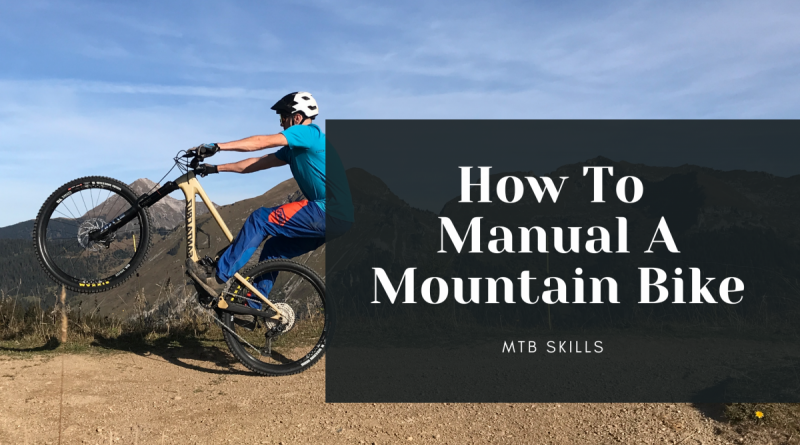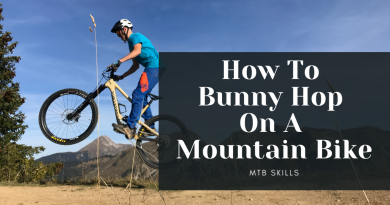How To Manual A Mountain Bike | MTB Skills
We’re going to teach you how to manual a mountain bike easily, by breaking it down into simple fundamentals that are learned effortlessly. You will quickly see how the manual can improve your riding and take your riding to the next level. Although the manual looks cool, it’s not just a way to impress your mates.
What is a manual on a mountain bike?
A manual is lifting the front wheel and riding on the back wheel without pedalling. The difference between a wheelie and a manual is with a wheelie you usually sit down and pedal to keep the front wheel up, whereas with a manual you use your momentum to keep the front wheel up, and you’re normally stood up on the pedals.
The wheelie vs the manual, which is better?
The wheelie and the manual are both fundamental skills on a mountain bike, and they are both very useful and fun in the right situations. The wheelie is good to help you lift the front wheel over obstacles, and help with technical climbs, whereas the manual is a great skill to generate speed and flow on the trail.
But, why manual?
Manuals have many uses from; generating speed through gaining extra pump or keeping the bike stable though on an awkward drop, to keeping the bike planted on a tricky compression. The manual is a fun skill, that helps tie all your skills together, this will make you feel more confident while improving flow and speed on the trail. Once you’re confident with popping manuals, you will do them all the time on the trail without even thinking about it.
How To Manual?
It can be worth learning to wheelie before learning the manual so you know where the balance point is, however, it’s not essential. If you do want to learn to wheelie first here’s our guide on how to wheelie: How To Wheelie A Mountain Bike | MTB Skills Guide

Step 1: Start with Your head and body close to the bike
Starting with your body close to the bike, keeping your feet level. This will give you space to straighten your arms and legs to pull the front wheel up into the balance point. Remember, it’s important to keep looking straight ahead throughout the manual, this will help keep you stable and travelling in the direction you want to go.
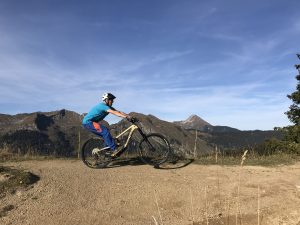
Step 2: Pop from the front of the bike
The key to getting the front wheel up is all about how you move your weight from the front to the back of the bike. Aim to stand over the front of the bike while pushing down on the forks,
Step 3: Move weight over the rear wheel, while keeping knees bent
Once your forks start to come back up, quickly shift your weight over the back wheel while pulling up on the handlebars. Try to get your weight right back over the back of the rear wheel – most beginners don’t get their weight far enough back.
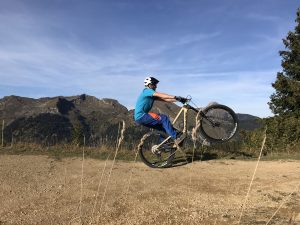
Step 4: Find the balance point, while keeping the front wheel not too high
Try to play around pulling the front wheel up, and riding on the back wheel, even if only for a brief moment. The aim is to find the balance point, which should allow you to hold the manual for longer. Once you find the balance point, straighten up your arms with a slight bend, this should help you hold the bike at the balance point.
Step 5: Push with legs to keep the front wheel up for a longer manual
When you are feeling comfortable with holding the bike at the balance point for 2-3 seconds. You can now use your legs to push against the pedal to keep the front wheel up. Try to time this as the front wheel starts to drop, making only small adjustments, to begin with.
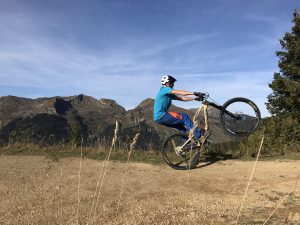
Step 6: Practice rear brake control
Always cover the rear brake, and dab the rear brake if you feel like you are starting to go off the back of the bike. Try to combine the pushing with your legs to keep the front wheel up, and dabbing the rear brake to not fall off the back. Once you master the manual, you will be able to manual for as long as you want depending on if you have enough speed.
Questions and Answers
How do you practice manuals on a mountain bike?
It’s best to start by learning a wheelie and then progress onto a manual. The best way to practice a manual on a mountain bike is to start by learning to pull up and step off the rear of the bike. Next, learn rear brake control, which will help prevent you from falling off the rear of the bike. lastly, learn to pull up while holding your weight over the rear wheel and hold at the balance point. Manuals are fun to learn but do take some practice.
Are 29ers harder to manual?
Yes, due to the increased bottom drop, and slightly higher center of gravity. However, 29ers are not difficult to manual if you are confident at manuals it just takes a little getting used to. The benefit to the increased bottom bracket drop on 29ers is that it makes the bikes much more stable. Wheel size and geometry are all about finding a good balance in performance. Often the issue with mountain bike design is that frames are normally designed for speed, so brands can get better recognition from good race results. However, the fastest bike is not always the most fun bike to ride for the average nonprofessional rider.
Should I learn to manual or wheelie first?
Learn to wheelie first. This is because the wheelie is much easier, and the skills learned from being able to wheelie are easily transferred over to learning to manual. We have a post here on how to wheelie: How To Wheelie A Mountain Bike | MTB Skills Guide. Once you’ve learned how to wheelie a mountain bike, you can pick up a manual in no time!
You may also like:

